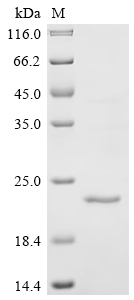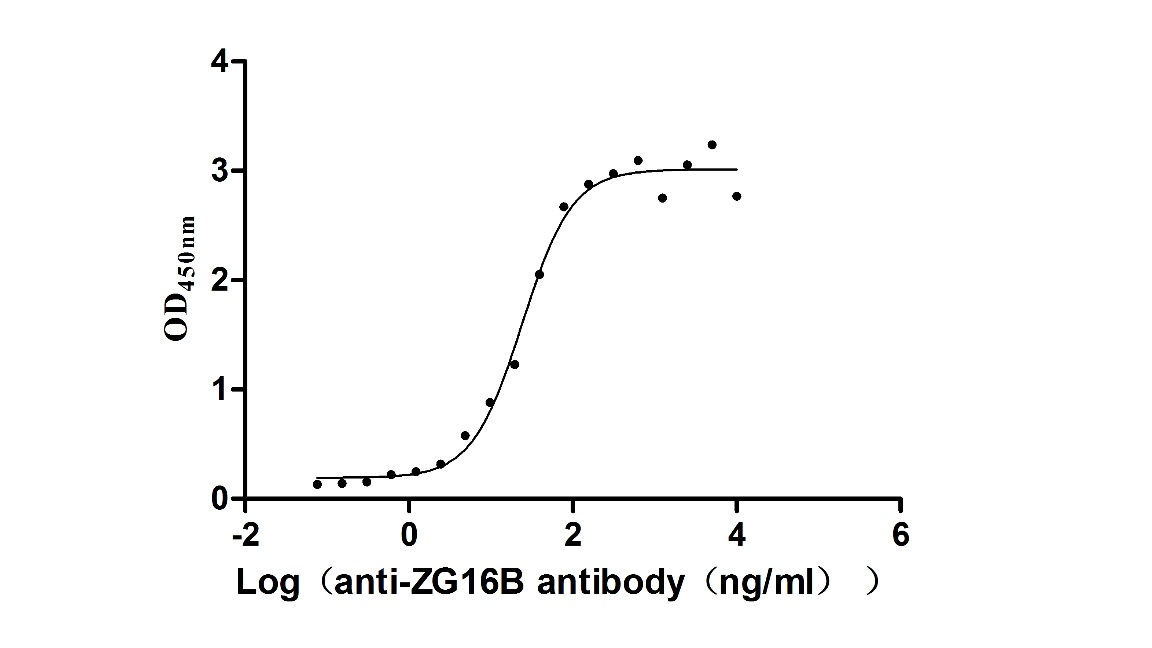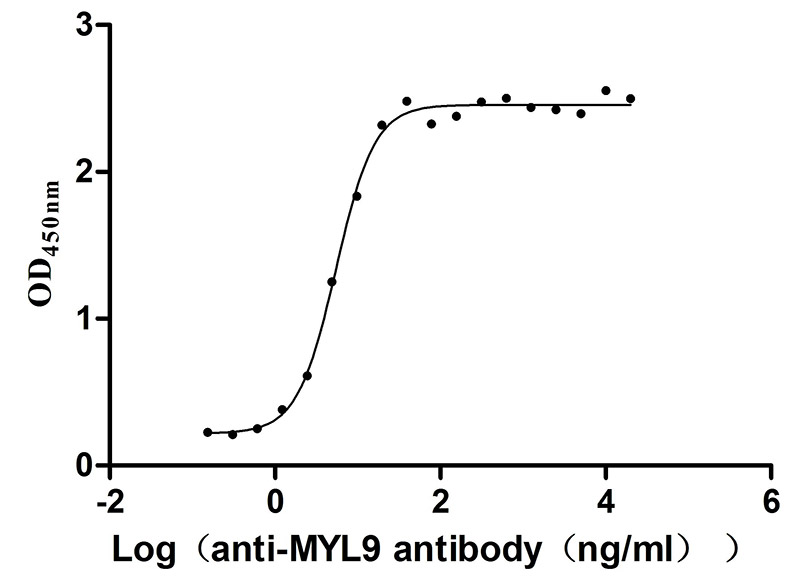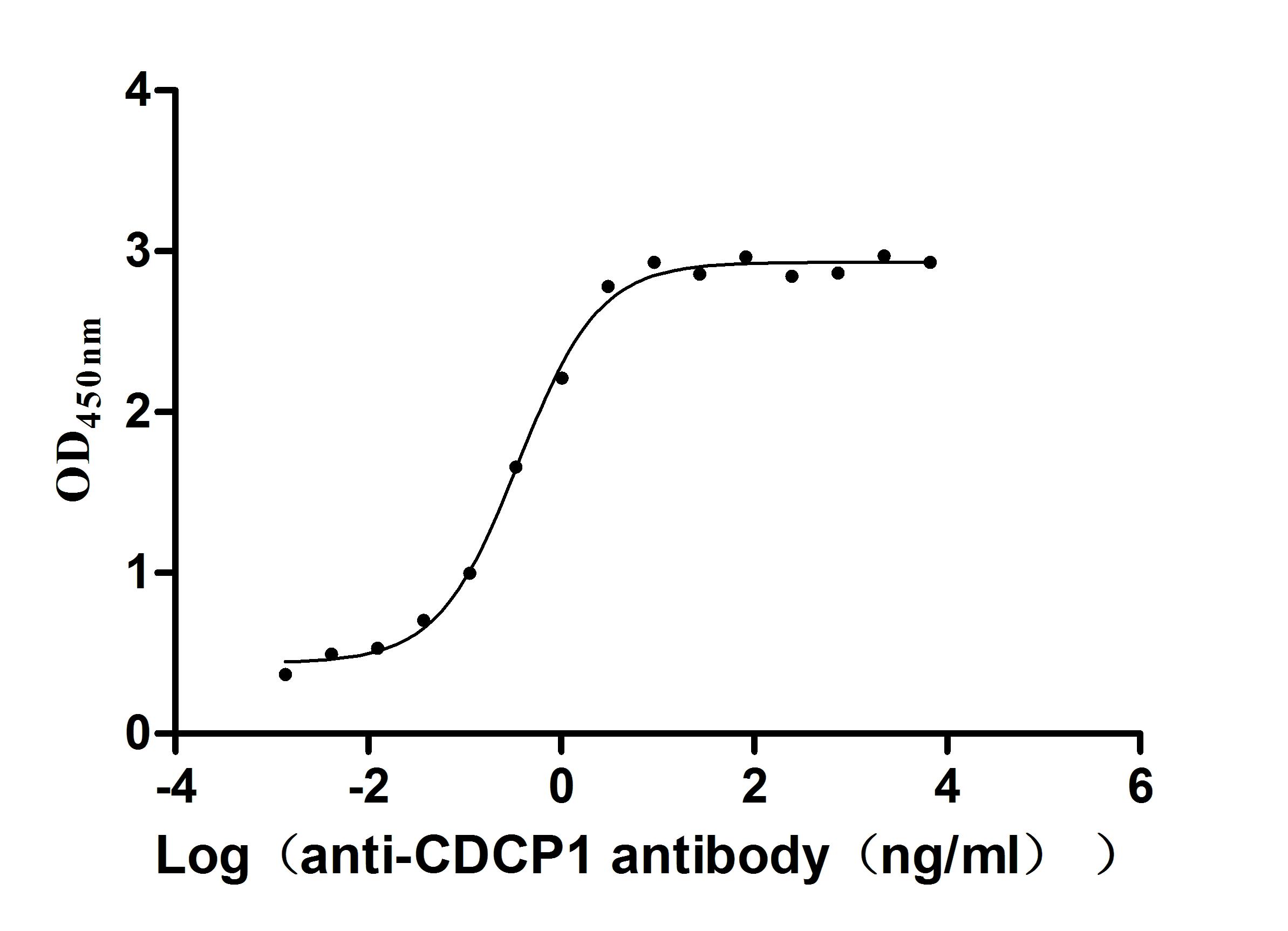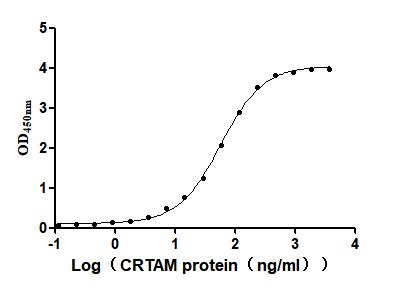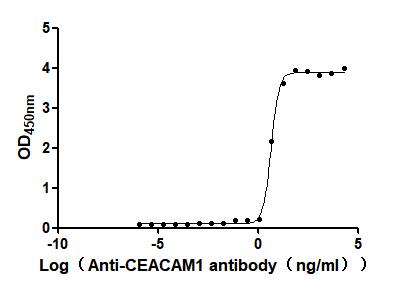Recombinant Mouse C-C chemokine receptor-like 2 (Ccrl2), partial
-
中文名稱:Recombinant Mouse C-C chemokine receptor-like 2(Ccrl2),partial
-
貨號:CSB-EP004852MO1
-
規(guī)格:¥1836
-
圖片:
-
其他:
產(chǎn)品詳情
-
純度:Greater than 90% as determined by SDS-PAGE.
-
生物活性:Not Test
-
基因名:
-
Uniprot No.:
-
別名:(Chemokine receptor CCR11)(G-protein coupled beta chemokine receptor)(Lipopolysaccharide-inducible C-C chemokine receptor)(L-CCR)
-
種屬:Mus musculus (Mouse)
-
蛋白長度:Partial
-
來源:E.coli
-
分子量:20.6
-
表達(dá)區(qū)域:1-42aa
-
氨基酸序列MDNYTVAPDDEYDVLILDDYLDNSGPDQVPAPEFLSPQQVLQ
Note: The complete sequence may include tag sequence, target protein sequence, linker sequence and extra sequence that is translated with the protein sequence for the purpose(s) of secretion, stability, solubility, etc.
If the exact amino acid sequence of this recombinant protein is critical to your application, please explicitly request the full and complete sequence of this protein before ordering. -
蛋白標(biāo)簽:N-terminal 6xHis-KSI-tagged
-
產(chǎn)品提供形式:Liquid or Lyophilized powder
Note: We will preferentially ship the format that we have in stock, however, if you have any special requirement for the format, please remark your requirement when placing the order, we will prepare according to your demand. -
緩沖液:If the delivery form is liquid, the default storage buffer is Tris/PBS-based buffer, 5%-50% glycerol. If the delivery form is lyophilized powder, the buffer before lyophilization is Tris/PBS-based buffer, 6% Trehalose.
-
復(fù)溶:We recommend that this vial be briefly centrifuged prior to opening to bring the contents to the bottom. Please reconstitute protein in deionized sterile water to a concentration of 0.1-1.0 mg/mL.We recommend to add 5-50% of glycerol (final concentration) and aliquot for long-term storage at -20℃/-80℃. Our default final concentration of glycerol is 50%. Customers could use it as reference.
-
儲存條件:Store at -20°C/-80°C upon receipt, aliquoting is necessary for mutiple use. Avoid repeated freeze-thaw cycles.
-
保質(zhì)期:The shelf life is related to many factors, storage state, buffer ingredients, storage temperature and the stability of the protein itself.
Generally, the shelf life of liquid form is 6 months at -20°C/-80°C. The shelf life of lyophilized form is 12 months at -20°C/-80°C. -
貨期:Delivery time may differ from different purchasing way or location, please kindly consult your local distributors for specific delivery time.
-
注意事項:Repeated freezing and thawing is not recommended. Store working aliquots at 4℃ for up to one week.
-
Datasheet & COA:Please contact us to get it.
相關(guān)產(chǎn)品
靶點詳情
-
功能:Receptor for CCL19 and chemerin/RARRES2. Does not appear to be a signaling receptor, but may have a role in modulating chemokine-triggered immune responses by capturing and internalizing CCL19 or by presenting RARRES2 ligand to CMKLR1, a functional signaling receptor. Plays a critical role for the development of Th2 responses.
-
基因功能參考文獻(xiàn):
- Ccrl2 modulates chemerin levels in the epithelial lining fluid of the lungs but does not contribute to the development of O3-induced lung pathology. PMID: 29242308
- upregulation of CCRL2 observed under inflammatory conditions is functional to finely tune CXCR2-mediated neutrophil recruitment at sites of inflammation. PMID: 28743719
- chemokine (CC motif) receptor-like 2 should be considered to be a molecule involved in the regulation of the inflammatory response associated with multiple sclerosis. PMID: 26744451
- CCRL2 mRNA was not significantly changed in murine and human non-alcoholic steatohepatitis liver. CCRL2 was related to the mRNA levels of F4/80, transforming growth factor beta and alpha smooth muscle actin in murine non-alcoholic steatohepatitis. PMID: 28600126
- Proinflammatory stimuli upregulate atypical chemerin receptor CCRL2 and VCAM-1 on endothelial cells via NF-kappaB and JAK/STAT intracellular signaling pathways. PMID: 22696441
- Ccrl2(-/-) mice showed normal recruitment of circulating dendritic cells (DC) into the lung, but a defective trafficking of antigen-loaded lung DC to mediastinal lymph nodes. PMID: 20606167
- Expression of L-CCR mRNA is reported in murine astrocytes and microglia and is greatly enhanced under proinflammatory conditions; this receptor may play a role in neuroinflammatory processes. PMID: 12555200
- Prominent expression of L-CCR mRNA is detected in astrocytes and microglia at early time points throughout the brain and spinal cord in experimental autoimmune encephalomyelitis supporting the proposed relationship of L-CCR expression to CNS inflammation. PMID: 14999816
- Results identify chemerin as a natural nonsignaling protein ligand for both human and mouse CCRL2. PMID: 18794339
顯示更多
收起更多
-
亞細(xì)胞定位:Cell membrane; Multi-pass membrane protein.
-
蛋白家族:G-protein coupled receptor 1 family
-
組織特異性:Expressed in macrophages, astrocytes, in glial cells. Constitutively expressed by mast cells. Detected in bronchial epithelium in OVA-induced airway inflammation. Up-regulated during dendritic cell (DC) maturation.
-
數(shù)據(jù)庫鏈接:
Most popular with customers
-
Recombinant Mouse Tyrosine-protein kinase Mer (Mertk), partial (Active)
Express system: Mammalian cell
Species: Mus musculus (Mouse)
-
Recombinant Human V-set and immunoglobulin domain-containing protein 4 (VSIG4), partial (Active)
Express system: Mammalian cell
Species: Homo sapiens (Human)
-
Recombinant Macaca fascicularis zymogen granule protein 16 homolog B (ZG16B) (Active)
Express system: Mammalian cell
Species: Macaca fascicularis (Crab-eating macaque) (Cynomolgus monkey)
-
Recombinant Human Myosin regulatory light polypeptide 9 (MYL9) (Active)
Express system: Yeast
Species: Homo sapiens (Human)
-
Recombinant Human CUB domain-containing protein 1 (CDCP1), partial (Active)
Express system: Mammalian cell
Species: Homo sapiens (Human)
-
Recombinant Mouse Cytotoxic and regulatory T-cell molecule (Crtam), partial (Active)
Express system: Mammalian cell
Species: Mus musculus (Mouse)
-
Recombinant Macaca fascicularis Zinc transporter ZIP6 isoform X1(SLC39A6),partial (Active)
Express system: Baculovirus
Species: Macaca fascicularis (Crab-eating macaque) (Cynomolgus monkey)
-
Express system: Mammalian cell
Species: Homo sapiens (Human)

